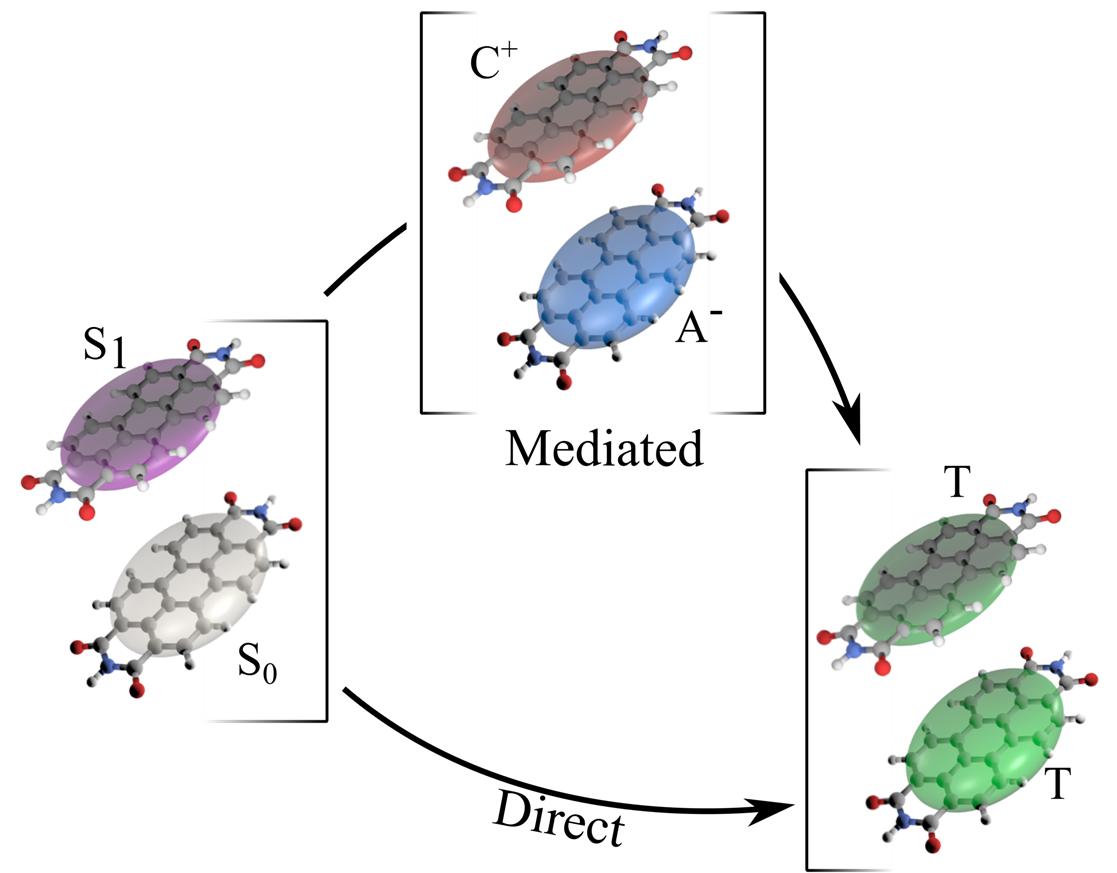Singlet Fission Yields in Organic Crystals
The splitting of a singlet excited state in two triplet excited states, singlet fission (SF), could drastically enhance the efficiency of organic photovoltaic (OPV) devices. In practice, however, the SF yield is typically very low.
Researchers from NWU calculated the SF yield as a function of the stacking geometry of perylenediimide derivatives in their molecular crystal form. The unique fragment-based approach in ADF was used to calculate electronic couplings potentially involved in the SF processes.

A singlet exciton generated by photon absorption may fission into two triplet states, either directly via weak 2e-coupling (V2e), or indirectly via a charge transfer state. The HOMO and LUMO of perylenediimide are also shown.
The calculations confirm the experimental evidence that the direct mechanism prevails: S1S0 → T1T1. While the electronic coupling for this two-electron process is much smaller, the indirect process, involving one-electron couplings, is disfavored by the high-energy intermediate charge transfer state. The small 2e-couplings dominating the SF process are crucially affected by the stacking geometries, opening the possibility for designing high-efficiency OPV materials.
See also: modeling organic electronics with ADF
N. Renaud, P. A. Sherratt, and M. A. Ratner, Mapping the Relation between Stacking Geometries and Singlet Fission Yield in a Class of Organic Crystals, J. Phys. Chem. Lett., 4, 1065-1069 (2013)
Key conceptsADF bonding analysis Charge Transport organic electronics